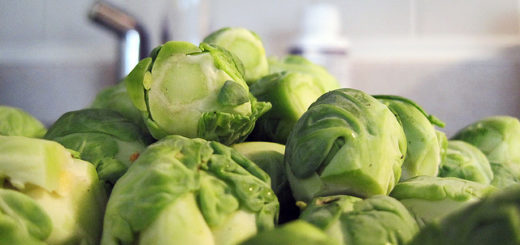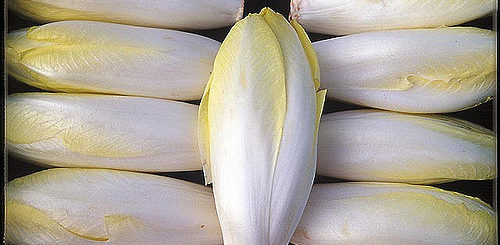Leek
Dating back more than 4,000 years to Mesopotamian times, the sturdy leek is perhaps the most overlooked member of the allium family, which includes the ubiquitous onion and garlic. This may be because the flavor of the leek is subdued and delicate, which seems to contradict its statuesque and tightly bound physical apperance.
Unlike onions and garlic, leeks do not possess a bulbuous root. Instead, their leaves grow cylindrically with only the slightest buldge at the end. The above-ground leaves take in the sun and become woody and fibrous, while the underground bit of veg remains tender in its sheltered state. To maximize the tender white and light green bits at the root end, farmers mound dirt around the sprouting plant, tricking the leek into an endless, Sisyphean journey through topsoil. The leek gets its post-harvest revenge, however, as prep chefs must meticulously wash each leek to rid them of excess dirt caught between tight layers.
While there are not many marketing campaigns out there promoting the lowly leek, it does appear as a symbol of Wales on British one pound coins minted in 1985 and 1990. (Rather amusing that the national emblem of the United States is a spread wing eagle, while that of Wales is tasty yet homely vegetable.) However, the leek plays a proud role in Welsh wartime history. According to legend, King Cadwaller had his soliders distinguish themselves from invading Saxons by wearing the vegetable on their helmets. Rather inspired strategy, as the battle took place in a leek field.
Wales applied leeks in warfare. France applied leeks in tureens. One of the most popular uses of leeks is in a vichyssoise, which is a fancy French name for a simple potato leek soup. Leeks can also be enjoyed raw, their crunchy leaves serve well on a crudite platter, and add beautiful color and crunch when sliced thin and added to salads.
When selecting leeks, look for firm, straight specimens with dark green leaves and white, unblemished necks. Larger, more mature leeks are generally more fibrous in texture, so the best eating comes from leeks that are smaller than 1.5 inches in diameter. Fresh leeks can be kept up to two weeks in the crisper drawer, however cooked leeks perish quickly, so any dishes containing them should be consumed within two days of preparation. To maximize the edible portion of the leek, cut the dark greens off at a diagonal to create, in essence, a “leek spear.” This technique preserves more of the tender center. Then, slice the leek in half lengthwise and run water between each layer to remove any trapped dirt.
.taste
braised leeks
fritatta with spinach, potatoes and leeks
leek and chive custard
leek tart
potato leek soup




Recent Comments